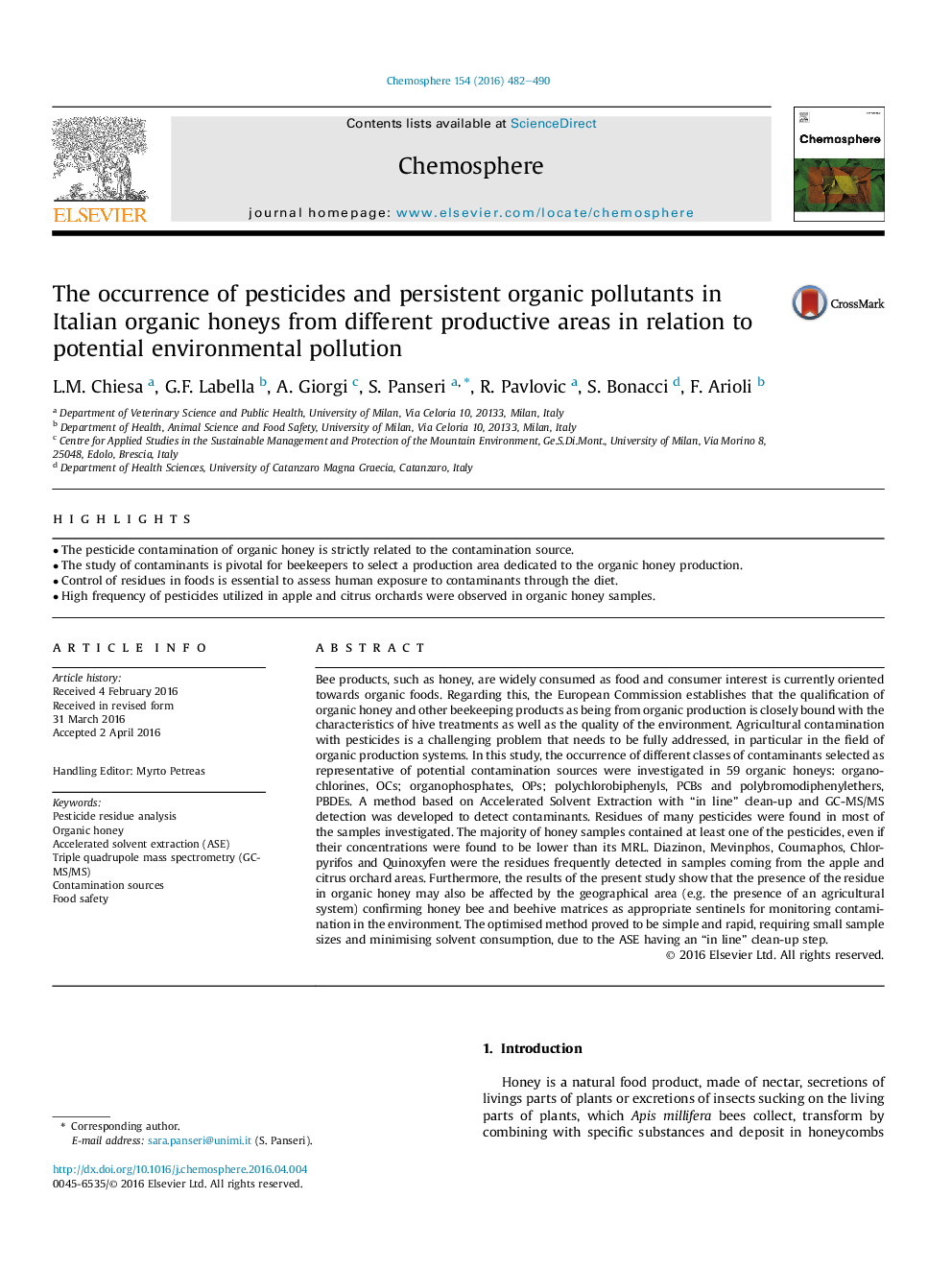| Article ID | Journal | Published Year | Pages | File Type |
|---|---|---|---|---|
| 6306648 | Chemosphere | 2016 | 9 Pages |
Abstract
Bee products, such as honey, are widely consumed as food and consumer interest is currently oriented towards organic foods. Regarding this, the European Commission establishes that the qualification of organic honey and other beekeeping products as being from organic production is closely bound with the characteristics of hive treatments as well as the quality of the environment. Agricultural contamination with pesticides is a challenging problem that needs to be fully addressed, in particular in the field of organic production systems. In this study, the occurrence of different classes of contaminants selected as representative of potential contamination sources were investigated in 59 organic honeys: organochlorines, OCs; organophosphates, OPs; polychlorobiphenyls, PCBs and polybromodiphenylethers, PBDEs. A method based on Accelerated Solvent Extraction with “in line” clean-up and GC-MS/MS detection was developed to detect contaminants. Residues of many pesticides were found in most of the samples investigated. The majority of honey samples contained at least one of the pesticides, even if their concentrations were found to be lower than its MRL. Diazinon, Mevinphos, Coumaphos, Chlorpyrifos and Quinoxyfen were the residues frequently detected in samples coming from the apple and citrus orchard areas. Furthermore, the results of the present study show that the presence of the residue in organic honey may also be affected by the geographical area (e.g. the presence of an agricultural system) confirming honey bee and beehive matrices as appropriate sentinels for monitoring contamination in the environment. The optimised method proved to be simple and rapid, requiring small sample sizes and minimising solvent consumption, due to the ASE having an “in line” clean-up step.
Keywords
Related Topics
Life Sciences
Environmental Science
Environmental Chemistry
Authors
L.M. Chiesa, G.F. Labella, A. Giorgi, S. Panseri, R. Pavlovic, S. Bonacci, F. Arioli,
